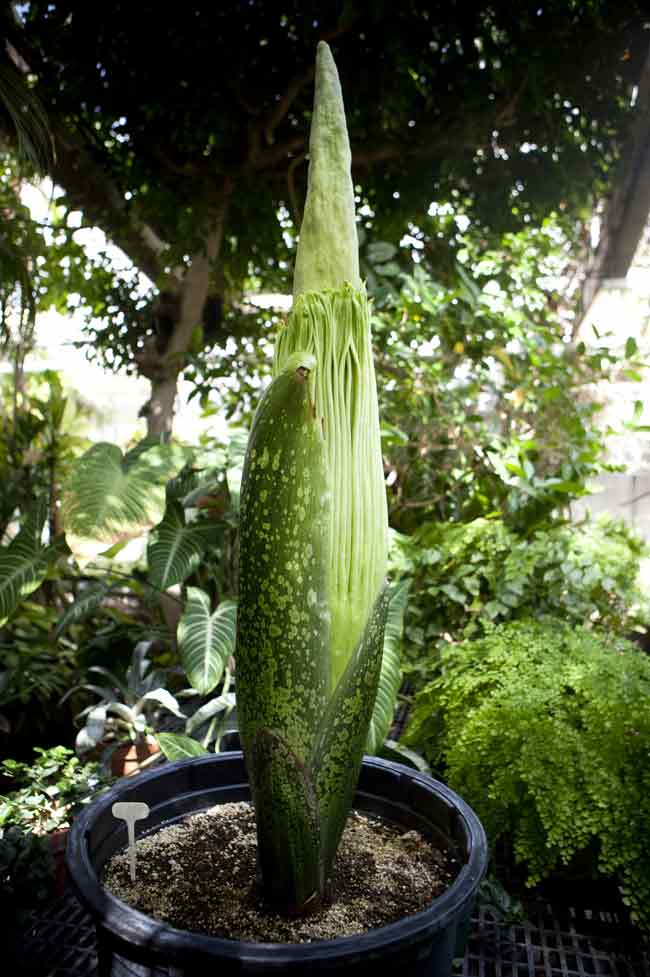
Corpse Flower to Cause a Big Stink

A rare corpse flower is expected to bloom next week, releasing a smell that is known to knock people off their feet.
Even so, the staff at Binghamton University in upstate New York can hardly wait. One of their largest plants, the Amorphophallus titanum — also known as the corpse flower or Titan Arum — should open up on or around Sept. 14. [See the stages of a corpse flower's bloom.]
The bloom is expected to last only a day, during which time the stunning flower will release an odor of decomposing flesh.
The flower is native to the equatorial rainforests of central Sumatra in western Indonesia, and it evolved its horrendous odor to attract pollinating carrion beetles and flesh flies, which normally feed on rotting flesh.
The corpse flower bloom is actually not a single flower, but thousands of tiny flowers, which botanists call an inflorescence.
The Binghamton plant came directly from Bali, Indonesia. The plant was named Metis, in honor of the ancient Greek goddess of learning and teaching and in keeping with the tradition of naming the corpse flower after mythological Titans from ancient Greece.
When Metis first arrived at Binghamton University in 2007, it weighed in at a little over 4 pounds (1.8 kilograms) and the unopened flower measured 8 inches (20 centimeters) in diameter. In the spring of 2008 it produced a fair-sized leaf and by the time Metis went into dormancy later that year, it weighed a whopping 40 pounds (18 kg) and measured 24 inches (61 cm) in diameter.
Sign up for the Live Science daily newsletter now
Get the world’s most fascinating discoveries delivered straight to your inbox.
In 2009 Metis grew a much bigger leaf, this one measuring 10 feet (3 meters) high and 10 feet wide. Such a large leaf, however, took its toll. When Metis entered its dormancy period at the end of April 2010, it only tipped the scales at a comparatively skinny 30 pounds (14 kg). Now, a mere four months later, Metis is back, producing its first flower at the ripe old age of 5.
Typically, Titan Arums are teenagers when they begin to bloom — flowering at this young age indicates Metis could be relatively advanced for its age. Greenhouse staff is eager to see just how well Metis will fare during its very first flowering, realizing that since corpse flowers bloom very infrequently, they may not see another bloom for upwards of 15 years. At a little over 51 inches (130 cm) tall right now, Metis could very well have an inflorescence of 5 feet (1.5 m) or more in diameter.
This article was provided by OurAmazingPlanet, a sister site to LiveScience.










